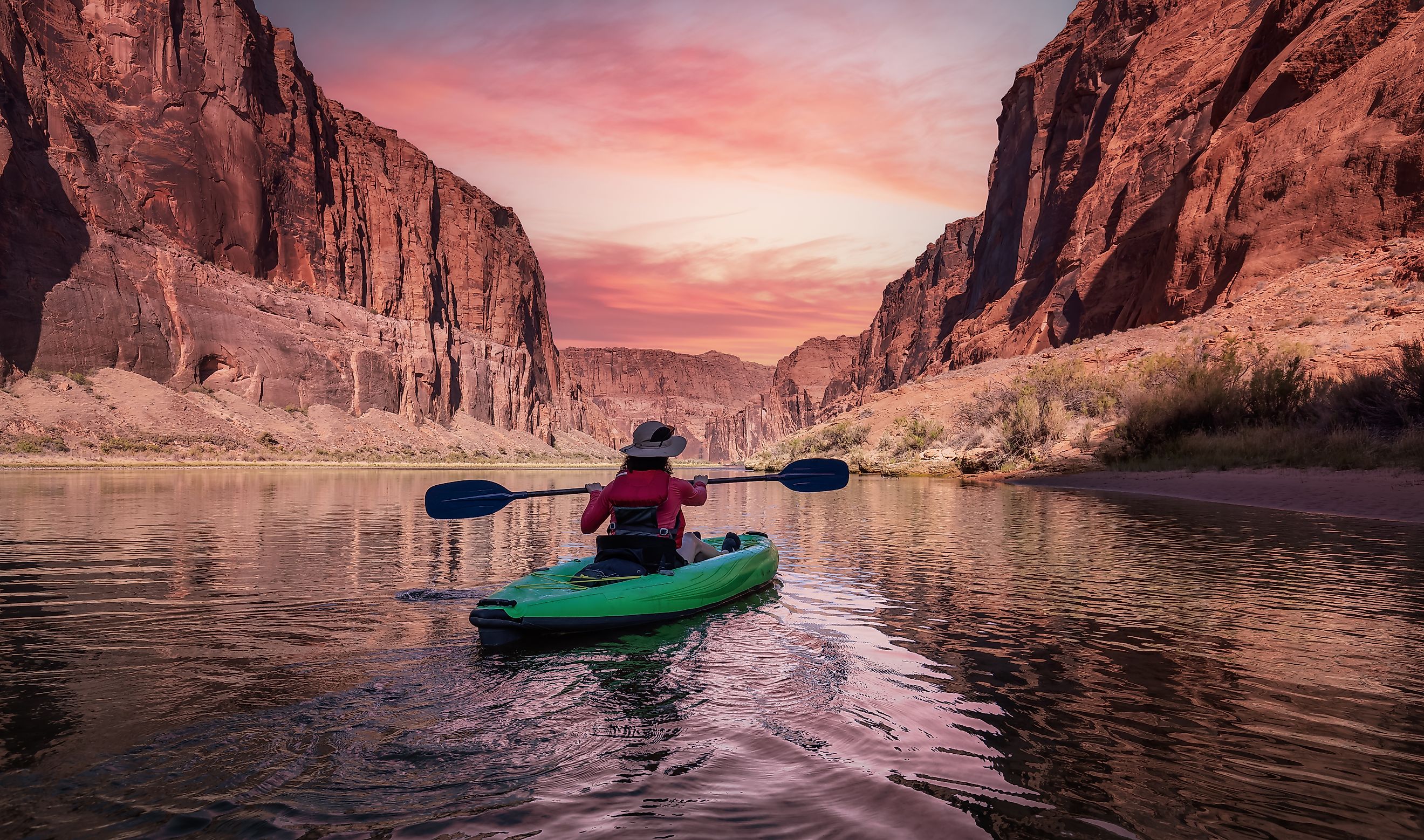
Explore America's Most Iconic 'Wild and Scenic' Rivers
America is full of rivers with natural beauty and cultural significance. America's waterways are so important that in 1968 the United States Congress determined an official list of rivers, determined "The National Wild and Scenic Rivers System", to conserve certain systems with significant value, either in terms of culture, scenery, recreation, history, or for another notable reason. An excerpt from the Wild and Scenic Rivesr Act of 1968: "It is hereby declared to be the policy of the United States that certain selected rivers of the Nation which, with their immediate environments, possess outstandingly remarkable scenic, recreational, geologic, fish and wildlife, historic, cultural or other similar values, shall be preserved in free-flowing condition, and that they and their immediate environments shall be protected for the benefit and enjoyment of present and future generations". This act established a partnership between different federal, state, and local agencies to preserve the health of these rivers, and established an archive for protecting their stories.
From the thunderous rapids of the Colorado River carving through the Grand Canyon to the tranquil, meandering waters of Oregon's Rogue River, these waterways are remarkable. Discover the wonders of these extraordinary rivers and the unique ecosystems they sustain.
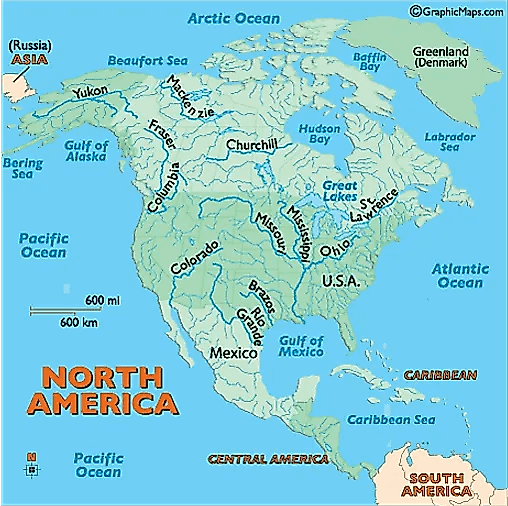
Chattooga River
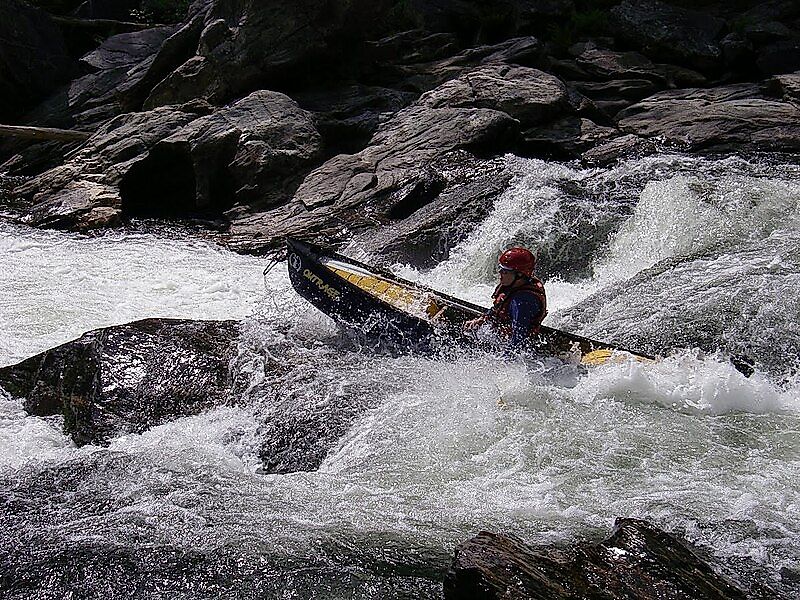
The Chattooga River, which forms part of the border between Georgia and South Carolina, is a renowned destination near the east coast for whitewater rafting and scenic wilderness exploration. Known for its wild and remote character, this river winds through the Chattooga Wild and Scenic River Corridor, offering dramatic gorges, expansive forestlands, and waterfalls within its reach.
The Chattooga’s nearly 59-mile stretch includes a variety of rapids, ranging from Class III to V, making it a popular spot for experienced rafters and kayakers, with Class V being the second most difficult classification on a standardized scale from 1-6. It gained fame as the filming location for the movie Deliverance and is considered one of the most challenging rivers in the southeastern U.S.
In addition to whitewater activities, the river’s more peaceful sections are ideal for canoeing, fishing, and wildlife photography. On your visit, you may also encounter diverse wildlife, including deer, wild turkey, and a variety of bird species. Hiking trails in the surrounding area provide access to scenic overlooks and remote wilderness areas too.
Salmon River
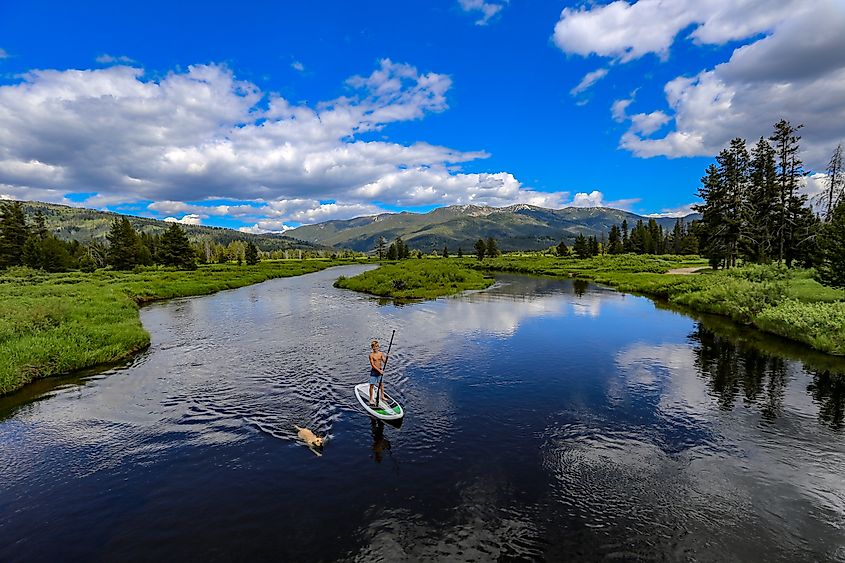
The Salmon River in Idaho is a perfect place for outdoor recreation in the interior of the Pacific Northwest. Flowing through the heart of the Frank Church-River of No Return Wilderness, this river stretches 104 miles and features hundreds of rapids, ranging from Class III to IV. These classifications mean that it can be quite thrilling to raft down, with even a few obstacles in the way, but not extremely dangerous, especially when a guide is with you. Its setting in the wilds of northern Idaho offers adventurers breathtaking views of rugged canyons, lush forests, and a handful of natural hot springs along the way.
The clear, cold waters are also home to native cutthroat trout, making it a popular location for catch-and-release fishing. Other kinds of wildlife sightings are common too, including black bears, elk, and bald eagles.
Accessible primarily by raft or kayak, the Middle Fork is a magnet for multi-day trips, with various camping sites located along the riverbanks. Strict regulations help preserve the river’s unspoiled character, ensuring a unique and immersive wilderness experience for all who visit, including you.
Klamath River
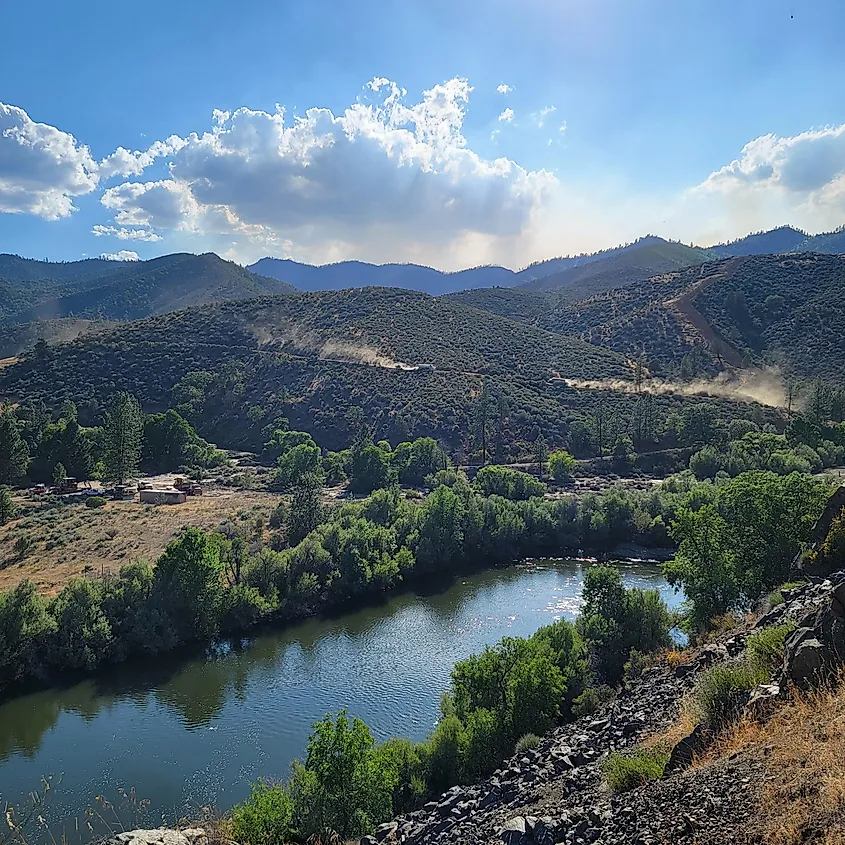
The Klamath River, flowing from Oregon through Northern California (with the protected section laying solely within California's borders), is one of the longest Wild and Scenic rivers in and around the Pacific Northwest, at 286 miles in length. Originating from the Klamath Mountains, it passes through tall redwood forests, deep canyons, and expansive valleys before eventually reaching the Pacific Ocean.
Rafting and kayaking are popular along the river’s stretches, which include both calm waters and exciting Class II-IV rapids. The river is hugely popular among fishermen for its excellent fishing, especially for salmon and steelhead, making it a prime destination for anglers. National park lovers also love this waterway, as it passes through protected areas like Redwood National and State Parks and Klamath National Forest & Butte Valley National Grassland.
The Klamath River is also culturally significant, as it holds deep ties to local Native American tribes, particularly the Karuk and Yurok.
Snake River
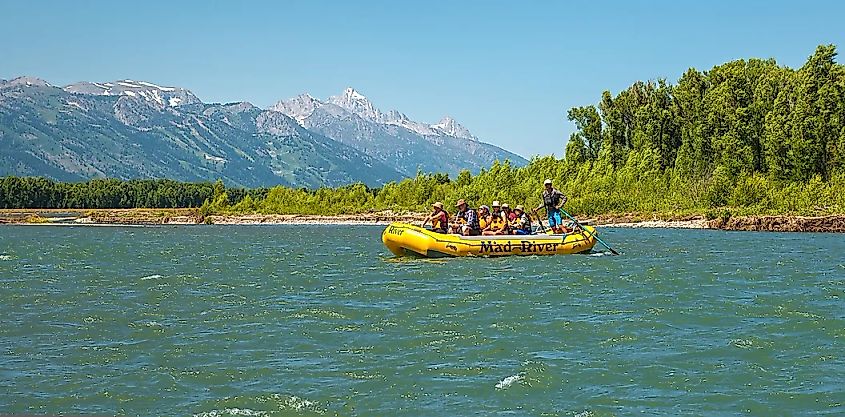
The Snake River Headwaters, located within Wyoming, flow through the world-famous landscapes of Grand Teton National Park and the Bridger-Teton National Forest, making it easily one of the most picturesque and diverse wild rivers in the United States.
This river originates from the Teton Range and meanders through a series of mountain valleys, giving its visitors views of the sharp peaks, alpine meadows, and forests in the surrounding area. The region is also a prime spot for fishing, with abundant populations of native cutthroat trout inhabiting the waterways.
The Snake River attracts outdoor adventurers who want to embark on a rafting, kayaking, or canoeing journey. Its calmer stretches mixed with a healthy dose of challenging rapids make it suitable for both beginners and experienced paddlers, although a guide is always recommended for anyone who does not know the area well.
The river’s headwaters are also rich in history, with Native American, pioneer, and fur trade connections going back centuries since before the country's founding.
This notable river is an attractive destination that serves as a gateway to Grand Teton as well as Yellowstone National Parks, drawing nature lovers, photographers, and outdoor enthusiasts to its untamed beauty and tranquil waters. Keep an eye out for the local wildlife, with sightings of elk, moose, and bald eagles being common.
Rio Grande
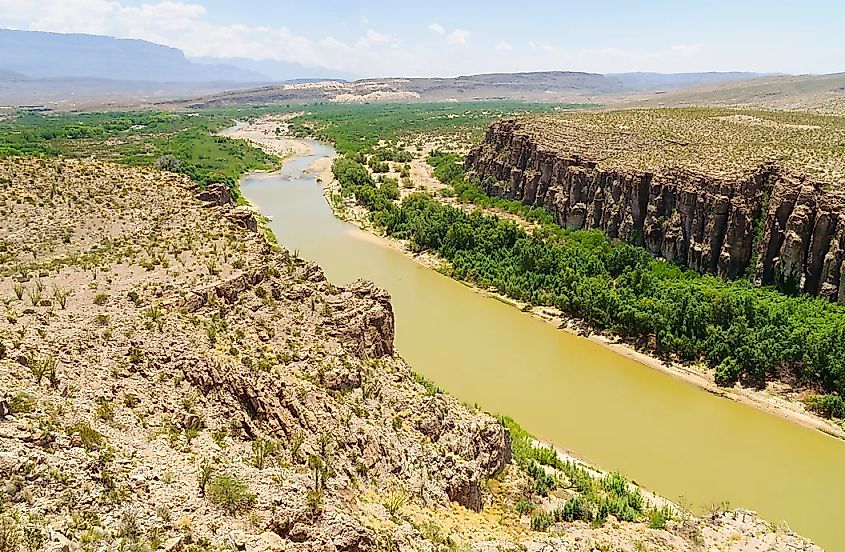
The Rio Grande Wild and Scenic River runs through the center of New Mexico and defines the border between Texas and Mexico. Stretching for 191 miles, it is the only designated Wild and Scenic River in Texas, offering the state's residents and visitors a unique opportunity to experience the natural beauty of the Chihuahuan Desert and the Rio Grande Valley. The river is known for its clear waters, which provide excellent opportunities for canoeing, kayaking, and rafting, especially through the Big Bend National Park region.
The river’s remote location and striking landscapes also make it a popular spot for solitude and wilderness adventures. With very low levels of light pollution, the region around it is also sought after by stargazers at night looking for the clearest skies possible.
The Rio Grande also holds cultural significance, with historical sites reflecting Native American, Spanish, and other settler influences. With few real towns nearby, Marfa and Alpine are good options. In these communities, you can further explore the area's unique culture and find accommodations, with a number of hotels, motels, and inns available in each. Camping is another popular option at either Big Bend or other nearby parks like Big Bend Ranch State Park and Davis Mountains State Park.
Deschutes River
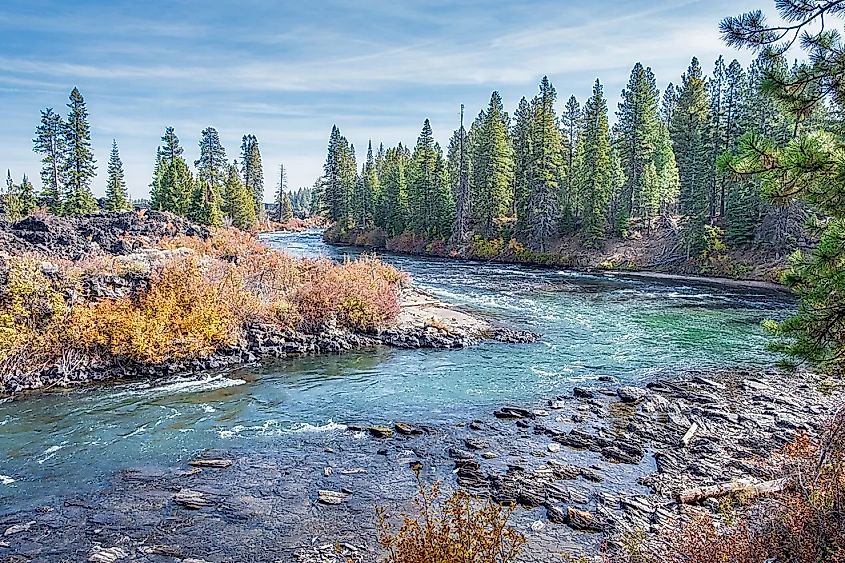
The Deschutes River in central Oregon extends just over 174 miles from the snows of the Cascade Mountains through the high desert of the Pacific Northwest. The river is known for its scenic beauty, with steep cliffs, unique riparian areas, and a diversity of wildlife. The Deschutes is perhaps most famous for its excellent fly fishing, with native rainbow and steelhead trout drawing anglers year-round.
Like many rivers on this list, rafting and kayaking are also major activities, with sections ranging from calm waters ideal for beginners to challenging Class III and IV rapids for more experienced paddlers.
The river’s proximity to the city of Bend makes it easily accessible, and the surrounding area provides numerous opportunities for hiking, mountain biking and camping. Bend is also well known for its breweries, making it a great place to relax after a hot summer day on the water.
Loxahatchee River
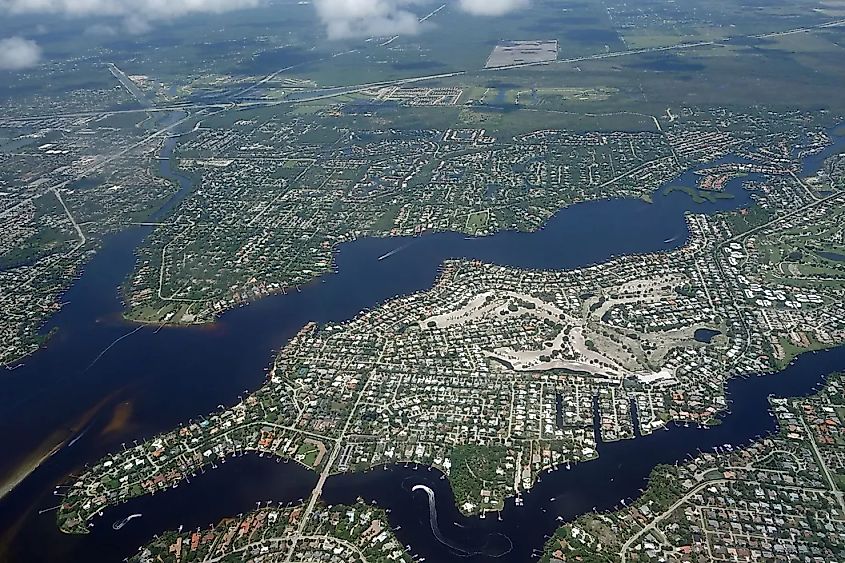
The Loxahatchee River in southeastern Florida is a shorter and tamer Wild and Scenic River, spanning just under 8 miles and not containing any significant rapids on its calm, temperate waters. Flowing through the Loxahatchee River District, the river meanders through lush wetlands, cypress swamps, and mangrove forests just outside of Orlando. The river draws many to see its wildlife, with frequent sightings of manatees, alligators, and a wide variety of bird species.
Paddling along the Loxahatchee is a popular activity, with local canoe and kayak rentals allowing all to explore it through its calm waters and scenic surroundings up close. Fishing is also common, with anglers targeting bass, sunfish, and other freshwater species.
Nearby parks and nature preserves, like the Trapper Nelson Interpretive Site, contain maintained foot trails and host regularly scheduled educational programs, making the Loxahatchee River an ideal spot for nature lovers, families, and outdoor adventurers in the Sunshine State.
Find Adventure on America's Most Pristine Waterways
The beauty and significance of America's Wild and Scenic rivers cannot be overstated. These cherished waterways, protected under the National Wild and Scenic Rivers System, not only provide stunning natural landscapes but also serve as critical habitats for diverse species. They offer unparalleled opportunities for recreation, inspiration, and solace. By preserving these rivers, we honor their ecological, cultural, and recreational importance. Let us continue to support conservation efforts, ensuring that future generations can experience the majestic flow and pristine beauty of our nation’s most iconic rivers. Together, we can keep these natural treasures wild and scenic for years to come.










